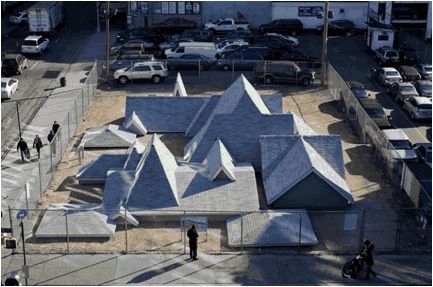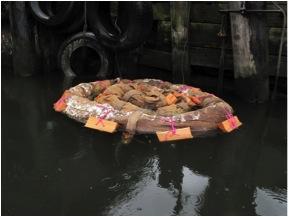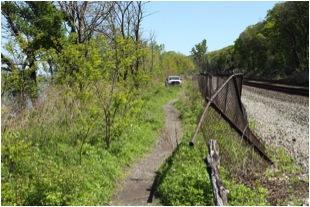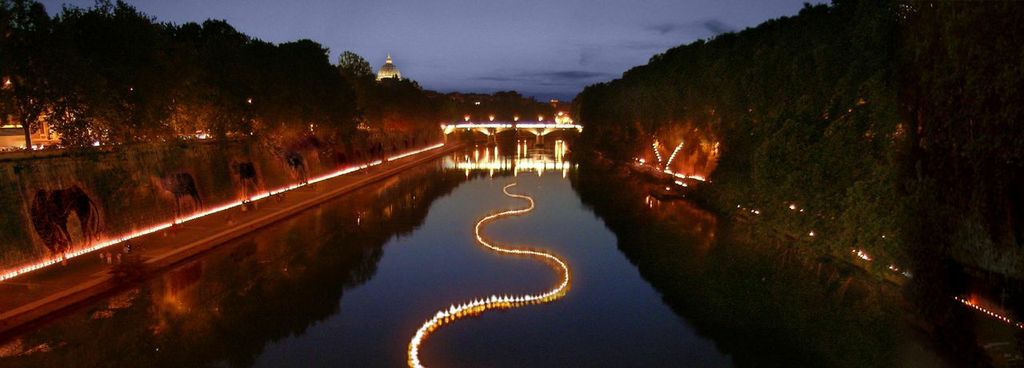MARY MISS/CITY as LIVING LABORATORY ~ BROADWAY: 1000 Steps (B/CaLL)
CaLL/WALKS and PANEL for MARFA DIALOGUES NEW YORK
WALKS:
Sunday, October 27, 12 noon – 4 PM beginning at Bowling Green
Sunday, November 10, 12 noon – 4 PM beginning at Broadway & 23rd Street (at the SW entrance to Madison Square Park)
PANEL:
Shifting Domains: Contemporary Art in the Threatened Ecological Commons (working title)
Tuesday, November 19, 6PM at the Robert Rauschenberg Project Space (455 West 19th Street)
In 2012, at the invitation of the Municipal Art Society, Mary Miss/City as Living Laboratory began a series of walks for its BROADWAY: 1000 Steps project. This Fall, MM/CaLL is continuing this initiative by hosting two walks in October and November, led by artist/scientist teams that will discuss solutions to a variety of environmental challenges along the Broadway corridor with particular focus on neighborhoods surrounding the three hubs of Bowling Green, 23rd Street, and 168th Street.
The walks will occur on two Sundays, October 27 and November 10, and will be 4 hours long, noon to 4PM. These walks will culminate with a panel Tuesday, November 19 (date to be confirmed), 6 PM, at the Robert Rauschenberg Foundation (RRF) Project Space (455 W. 19th Street), moderated by Suzaan Boettger, Shifting Domains: Contemporary Art in the Threatened Ecological Commons (working title) with a participating artist, scientist, and a cultural critic to reflect on the erosion of traditional distinctions between art and utility and emerging hybrids of artistic, social, and ecological functionality and how various artists’ strategies are recasting the role of the artist as an effective catalyst for social and environmental change.
The CaLL/WALKS have been made possible with support by the Robert Rauschenberg Foundation in partnership with Marfa Dialogues/NY, an examination of climate change science, environmental activism and artistic practice taking place this October and November 2013 in New York City. Marfa Dialogues/NY is a collaboration between the Robert Rauschenberg Foundation, Ballroom Marfa and the Public Concern Foundation and will feature more than 20 Program Partners, including MM/CaLL ~ BROADWAY: 1000 Steps, and a spectrum of exhibitions, performance, and interdisciplinary discussions at the intersection of the arts and climate change. www.marfadialogues.org
PARTICIPATING ARTISTS AND SCIENTISTS
ARTISTS
David Brooks has exhibited nationally and internationally at Miami Art Museum; Nouveau Musée National de Monaco; Dallas Contemporary; Bold Tendencies, London; James Cohan Gallery Shanghai; Cass Sculpture Foundation, UK; and, in New York, at Storm King Art Center, Sculpture Center, Gavin Brown’s Enterprise, Tanya Bonakdar, and Marlborough Chelsea. He was featured in the 2010 Greater New York at MoMA PS1 and in the 2012 Changwon Sculpture Biennale in South Korea. In 2011, he showed his critically acclaimed Desert Rooftops in the Last Lot in Times Square, sponsored by Art Production Fund. Forthcoming shows include solo exhibitions at American Contemporary, New York and the Galerie für Landschaftskunst, Hamburg. Brooks received his BFA from the Cooper Union in New York, and his MFA from Columbia University. He lives and works in New York City.
Jan Mun is a media artist creating social sculptures living in Brooklyn, NY. Mun is an amateur mycologist, microbiologist, and beekeeper working in collaboration with anthropologists, choreographers, composers, activists, gardeners, and scientists to develop ways to communicate with each other and the larger public. She works with community organizations including: New York Beekeeping, New York Mycology Society, Brooklyn Botanical Garden’s Herbarium, Newtown Creek Alliance, Genspace (community biotechnology laboratory), and Harvestworks (digital media arts center). She is working on a long-term project called ProfileUS: Invasive Species, which examines the biopolitics of the migrations of non-native plants and people in the United States and considers which populations are authorized to thrive and which are repressed through institutional laws. Using a combination of artistic and scientific processes, ProfileUS: Invasive Species is a social reflection and critique of our political and social systems.
Marco Antonio Castro is a New York-based artist, curator, and designer of cultural experiences. He combines his experience in art, technology, and design to explore healthy lifestyles and sustainable technologies and has partnered on many projects to revitalize communities and encourage collaboration. His projects have used art and art programs to revitalize neighborhoods of the city, bringing immigrant communities together, using innovative digital tools to advance new ways of seeing the world.
Matthew Jensen is a conceptual landscape artist based in New York City. His photographs of landscapes often develop into metaphors with recurring iconography, such as spruce trees, landscaped boulders, the sun, clouds, and blue skies. Spending a great deal of time in the landscape – walking and exploring – is essential to his process.
Kristin Jones maintains both studio and public practices, working across disciplines to create site-specific, time-based projects that frame natural phenomena against the built environment. Her installations, works on paper and time lapse photography have been exhibited internationally, most recently at: the Venice Architecture Biennale; the Museo Capitolina and Accademia degli Arcadi in Rome; the Blue Mountain Center in upstate New York; and Lower Manhattan’s River to River Festival; as well as several site-specific projects produced under the auspices of TEVERETERNO for the Tiber River in Rome. She resides in New York City.
Ellen Driscoll creates sculptures, drawings, and installations that explore resource consumption and material lineage. Recent works include “Distant Mirrors”, a floating archipelago of forms in the Providence River for 6 weeks in 2011. Co-produced with Waterfire, this work was created in partnership with the Roger Williams National Memorial and the Rhode Island Resources Recovery Corporation. Her multi-part, multi-year project, FASTFORWARDFOSSIL highlights the relationship between water and oil consumption and was displayed at the Smack Mellon Gallery in Brooklyn, NY and Frederieke Taylor Gallery, New York, NY. Ms. Driscoll has been awarded fellowships from the Guggenheim Foundation, the National Endowment for the Arts, the New York Foundation for the Arts, the Massachusetts Cultural Council, Anonymous Was a Woman, the LEF Foundation, and Radcliffe’s Bunting Institute. Her work is included in major public and private collections such as the Metropolitan Museum of Art, and the Whitney Museum of Art. Ellen Driscoll is currently based in Brooklyn, NY.
SCIENTISTS
John Waldman, Ph.D. is a professor of biology at Queens College. Author of the acclaimed Heartbeats in the Muck, an ecological history of the New York Harbor, Waldman’s major research interests are the ecology, evolution, and conservation biology of temperate North American fishes, especially the diadromous forms that migrate between fresh and salt water. In his twenty-years as a scientist with the Hudson River Foundation he worked primarily on better understanding and managing New York Harbor and the Hudson River Estuary – a system with myriad environmental problems.
Cori Bargmann, Ph.D. is an Investigator for Howard Hughes Medical Institute and a Torsten N. Wiesel Professor at the Lulu and Anthony Wang Laboratory of Neural Circuits and Behavior, Rockefeller University. Bargmann’s research is in how environment, experience and genes interact to shape an animal’s behavior. Caenorhabditis elegans, a worm with just 302 neurons, has been a subject of Bargmann’s study. This worm has shown considerable sophistication in its behaviors, and its defined neuronal wiring and genetic accessibility. Dr. Bargmann’s laboratory characterizes genes and neural pathways that allow the nervous system to generate flexible behaviors.
Robin Nagle, Ph.D. is an anthropologist whose research focuses on the category of material culture known variously as garbage, rubbish, refuse, trash, or waste. She is particularly interested in its labor and infrastructural requirements in urban contexts. She explores the many reasons that labors of waste and logistical necessities of successful large-scale solid waste management are accorded a form of invisibility, despite their essential role in political, economic, environmental, and cultural debate. She also asks what it means for workers to commit to a professional endeavor that carries a significant stigma even as it is fundamental to the city’s well-being. In addition, she looks at how metropolitan regions are literally shaped by trash, since many urban spaces have been formed by landfilling, and how notions of public health and hygiene are inextricably connected to assumptions about appropriate street cleanliness and garbage collection protocols.
Dr. Franco A. Montalto P.E. is an Assistant Professor at Drexel University, Department of Civil, Architectural, & Environmental Engineering and Director of the Sustainable Water Resource Engineering Lab. He is also the Founder and President of eDesign Dynamics LLC, a NYC-based environmental consulting firm specializing in planning, modeling, and design of green infrastructure and natural areas restoration projects. Montalto received his Ph.D. from Cornell University, Environmental Engineering, in 2003.
Dr. Patrick L. Kinney is a Professor of Environmental Health Sciences and Director of the Columbia Climate and Health Program. Dr. Kinney’s teaching and research address issues at the intersection of global environmental change, human health, and policy, with an emphasis on the public health impacts of climate change and air pollution. His work in the 1990s on air quality and environmental justice in Northern Manhattan and the South Bronx led to important new insights into the impacts of diesel vehicle emissions on local air quality. Dr. Kinney has carried out numerous studies examining the human health effects of air pollution, including studies of the effects of ozone and/or particulate matter on lung health and on daily mortality in large cities. More recently, he developed a new interdisciplinary research and teaching program at Columbia examining the potential impacts of climate change on human health. Dr. Kinney was the first to show that climate change could worsen urban smog problems in the U.S., with attendant adverse health impacts. He also has projected future health impacts related to heat waves in the NYC metropolitan area. In a new research initiative, Dr. Kinney is working with clinicians at Columbia University Medical Center and New York-Presbyterian Hospital to understand how past and future climate may affect pollen-related allergic airway diseases.
Nina Lauren Bassuk, Ph.D. obtained her PhD in Horticulture from the University of London, UK and is currently a professor and program leader of the Urban Horticulture Institute at Cornell University. She also sits on the executive board of the New York State Urban Forestry Council. Nina is co-author of ‘Trees in the Urban Landscape,’ a text for landscape architects and horticultural practitioners on establishing trees in disturbed and urban landscapes. A native New Yorker, Nina has authored over 100 papers focusing on the physiological problems of plants growing in urban environments, including improved plant selections for difficult sites, soil modification including the development of ‘CU-Structural Soil’ and improved transplanting technology. She is on the Technical advisory committee of the Sustainable Sites Initiative (SITES) and works closely with municipalities to help implement best practices in urban forestry management. Nina helped to develop the Student Weekend Arborist Team (SWAT) to inventory public trees in small communities. She is a frequent invited speaker at conferences and workshops and most recently received the Scott Medal for Horticulture.






Follow Us!